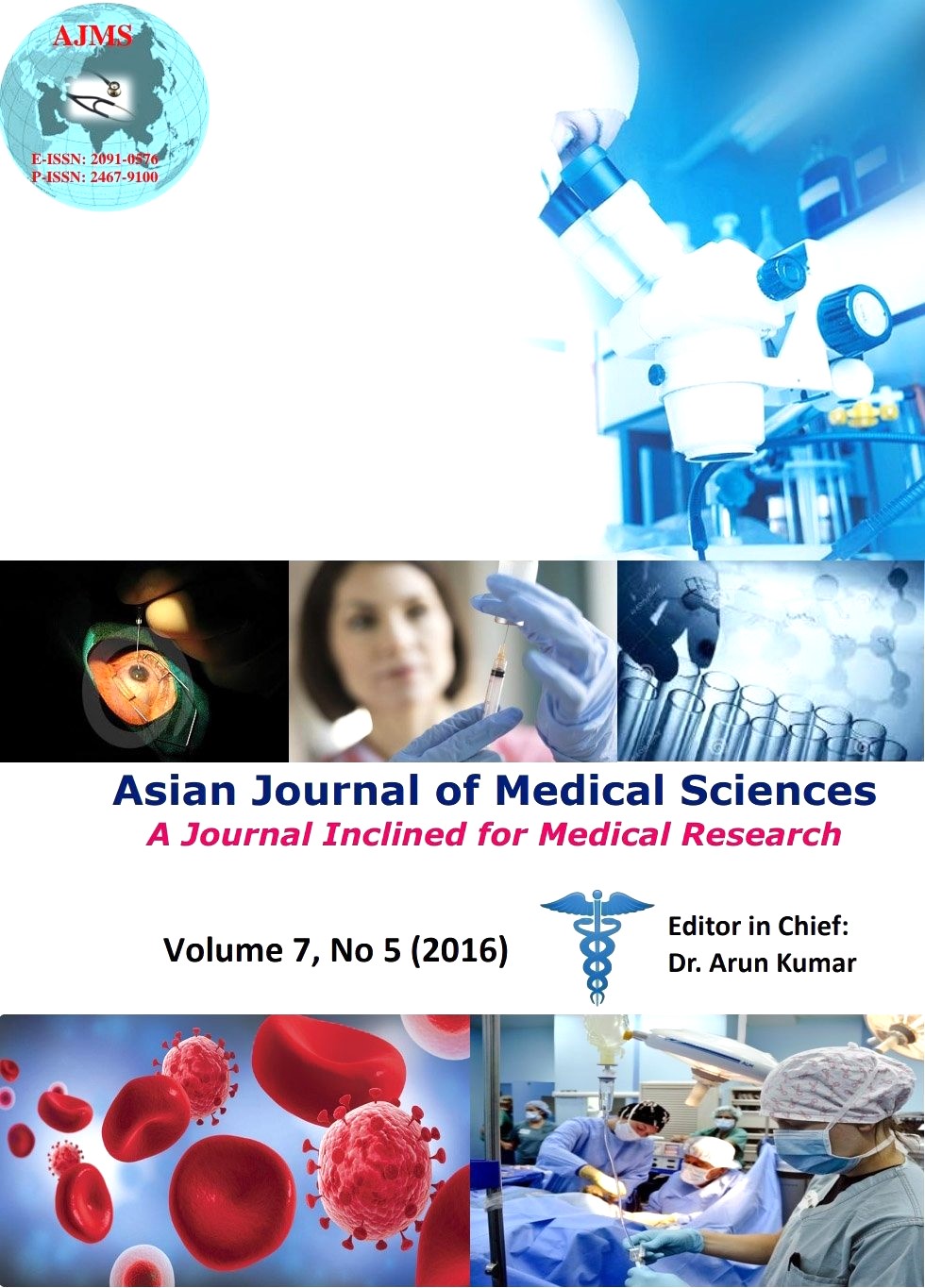Peripheral cell line suppression in dengue infection in relation to serological status
Keywords:
Thrombocytopenia, Neutropenia, Dengue infection, Bone marrow suppressionAbstract
Background:
Dengue infection occurs in epidemic and can be fatal. Bleeding due to thrombocytopenia and hypovolemic shock due to capillary leak is the predominant clinical feature. Bone marrow suppression as a cause of thrombocytopenia and neutropenia is well documented. This is generally recognised as decrease in the count of formed elements in the peripheral blood. However, relation of such a phenomenon with the serological stage of the disease is less studied.
Aims and Objectives:
We aimed to quantify the magnitude of peripheral cell line suppression in relation to serological status of dengue illness.
Materials and Methods:
This was a retrospective study. Dengue infection was diagnosed by clinical and serological parameters. The proportion of patients with peripheral cell line suppression and their association with the different serological phases was described.
Results:
Records of 219 Dengue positive patients were analysed retrospectively. Most common serological status was positive IgG which was noted in 68.9%, this was followed by NS1 antigen positivity in 39.7% of the patients. Around 40% of the patients had peripheral cell line suppression of two or more formed elements at the time of diagnosis. Sixty-four percent of them had low platelet and WBC counts. All the three formed elements were decreased in 14% of our patients. Of these , 23% were in the initial phase of the illness and 33.3% during post primary phase.
Conclusion: Decrease in the formed elements in the peripheral blood suggesting bone marrow suppression is seen in nearly 40% of the patients with Dengue infection at the time of diagnosis. This was highest during post primary phase followed by initial phase of the illness.
Asian Journal of Medical Sciences Vol.7(5) 2016 52-55
Downloads
Downloads
Additional Files
Published
How to Cite
Issue
Section
License
Authors who publish with this journal agree to the following terms:
- The journal holds copyright and publishes the work under a Creative Commons CC-BY-NC license that permits use, distribution and reprduction in any medium, provided the original work is properly cited and is not used for commercial purposes. The journal should be recognised as the original publisher of this work.
- Authors are able to enter into separate, additional contractual arrangements for the non-exclusive distribution of the journal's published version of the work (e.g., post it to an institutional repository or publish it in a book), with an acknowledgement of its initial publication in this journal.
- Authors are permitted and encouraged to post their work online (e.g., in institutional repositories or on their website) prior to and during the submission process, as it can lead to productive exchanges, as well as earlier and greater citation of published work (See The Effect of Open Access).




